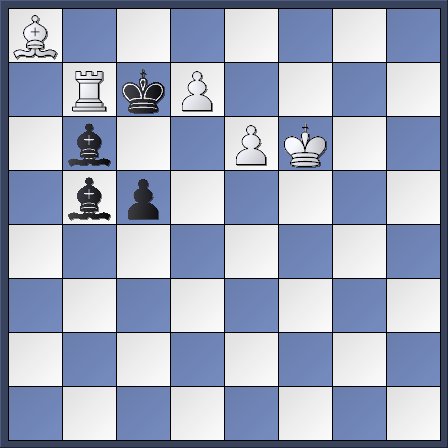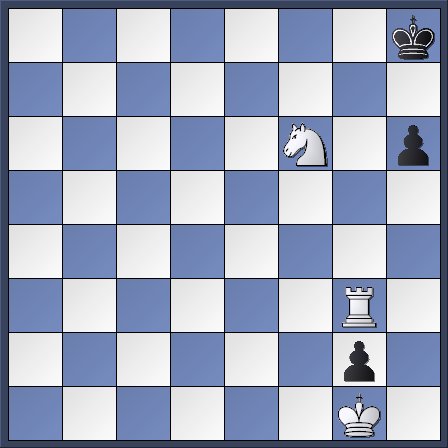
When I ran a search on "maya chess" just out of curiosity I was surprised and quite pleased to observe that there were several references - One site www.pathguy.com/chess/MayaChss.htm quoted Maya chess as " invented by Raja Ravi Sekhar , India's great player and teacher " - Quite pleasing to be praised thus but at the same time I felt quite ashamed that I had not bothered to put up all the rules and examples of play in the relevant section under my website - Well , that's why you see it all here now - Have fun going through the matter - It will take some time for me to put up all the extracts from our MCFI bulletins but it will all eventually come through -
Maya Chess is quite simply a chess variant that was created and developed by Raja Ravi Sekhar sometime during 1987 along with several other leading chess players from all over India – The following points that are excerpts from our MCFI 1993 volume are noteworthy –
Article-8.1- Any piece (excluding king and pawn) which is supported by one or more pieces of the same colour , loses its “original” powers and acquires instead the “original” powers of the supporting pieces. This concept known as “Maya power transference” is subject to the following condition : the transference effect is immediate and is effective as soon as and as long as such a state of support exists , only if the supporting piece has made at least one initial move -
MCFI-2. 2 – Article-8.1 also makes it clear that the “supporting” piece should have made at least one initial move for the “Maya power transference” to take effect – This also implies that the “supported” piece need not have moved –
MCFI-2. 4 – The pieces thus having (temporarily) the powers of other pieces are termed as “Maya” pieces or “false” pieces –
MCFI-3.1 – Check cannot be delivered to “Maya” or “false” kings and the game is won by the checkmate of the “original” or “real “ king –
MCFI-3. 2 – A move is legal if on completion of the move , the king is not in check –
MCFI-3. 3 – Thus in Maya chess , check can be parried in 6 different ways : The first three are as in the regular version of the game of chess but the next three are unique – (1) Moving the king (2) Interposing (3) Capturing the checking piece (4) Interposing to stop the enemy “Maya power transference” that caused the check (5) Capturing not the checking piece but the enemy “supporting” piece to stop the enemy “Maya power transference” that caused the check (6) Stopping interference with enemy “Maya power transference” and thereby changing the powers of the enemy checking piece –
MCFI - 9.1 – The rules of promotion under the laws of chess are applicable in addition to the “Maya promotion” rules that follow: Whenever a move is made , leading to a situation where any piece (excluding king) on the 8th rank is supported by a pawn on the 7th rank , then as part of the ame move , at the player’s choice , the piece o the 8th rank shall immediately be exchanged for a queen,rook,bishop or knight of the same colour without taking into account the other pieces still remaining on the chess board -
MCFI - 4. 1 – Repeated “Maya promotions” are possible with different pieces , successively shuttled to a particular square on the 8th rank , supported by a pawn on the 7th rank –
MCFI - 4. 2 – There can also be repeated “Maya promotions” with the pieces on the 8th rank moving to other squares on the same 8th rank , receiving the support of pawns placed on the 7th rank –
MCFI - 4. 3 – With each move made , as part of the same move , the player is entitled to a “Maya promotion” but may also opt to “promote” to the same piece , which in effect will mean no change in the value or powers of the piece –
The following problem by Raja Ravi Sekhar (MCFI-1 October 1988) will help to illustrate the repeated “Maya promotion” theme – White - Kf6 , Rb7 , Ba8 , P-d7,e6 - Black – Kc7 , Bb6 , Bb5 , P-c5 -

White to play and mate in two moves -
Solution : 1 b7-c8=Q The rook on b7 is supported by the bishop on a8 and is a “false” bishop moving thus to c8 – On reaching c8 the “false” bishop becomes a “false” pawn by getting the support of the pawn on a7 – A pawn on the 8th rank may promote and thus the “false” pawn promotes to queen – Immediately the bishop on a8 receives the support of the new “real” queen on c8 and becomes a “ false “ queen – This is all part of the same move 1 b7-c8 = Q [Try 1 f6-e7 (threat 2 d7-d8=Q mate) 1…c7-b8? 2 b7-c8 = Q mate but fails to 1…b6-b7 or 1…b5-d7 ]
1…c7-d6 2 c8-e8=N mate! The queen on c8 moves to e8 and becomes a “false” pawn again by receiving the support of the pawn on d7 – As part of the move made to this situation , White is entitled to a “Maya” promotion on e8 and opts for a knight which mates -
The following problem by S.N.Ravishankar of Bangalore is quite noteworthy -
White - Kg1 , Rg3 , Nf6 - Black - Kh8 - P-g2, h6 -

White to play and checkmate in 5 moves -
Solution : If it were to be Black to play the advance ...h6-h5 would be forced and after the move g3-g5 White would end up mating with f6-h5 a two rook mate with a "false" rook on h5 - Remarkably enough the solution lies in White using up the first three moves to merely "pass" and hand over the move to Black -
1.g3-g6! h8-h7 [Forced for if 1...h6-h5 then 2 g6-g5 followed by 3 f6-h5 checkmate!] 2 g6-g5 check!! h7-h8 3 g5-g3! Just getting back to the starting position but now with Black to play - 3...h6-h5 4 g3-g5 h5-h4 5 f6-h5 checkmate!
The following problem by R. Sivakumar has an interesting history to it - A few years back maybe sometime towards the end of 1988 I was at Madurai taking part in the traditional event over there organised by the Mappillai Vinayagar club - I explained the rules of Maya chess to my friend R.Sivakumar and left to see a movie , the night show that starts around 2200 hours - By the time I was back from the movie just past midnight , my friend had composed the problem that follows - My friends in the problem world tell me that a checking key is all wrong but the problem is nevertheless pleasing because of its themes of what came to be known as " Maya self interference" -
White - Ka4 , Ra2 , Nb2 , Ba1 - Black - Ka8 , Rb8 , Rh5 , P-a6,b7,g5 -
White to play and checkmate in 7 moves -
Solution : 1 b2-b6 a8-a7 2 a1-g1 a7-a8 3 a2-f2 Sivakumar introduces the idea of self interference in Maya Chess ! The alternating switch on and switch off effect is quite pleasing here - 3...a8-a7 4 f2-h4 a7-a8 5 h4-d4 a8-a7 6 d4-h8 a7-a8 7 b6-c7 checkmate !
White to play and mate in 7 moves
White to play and mate in 7 moves
White to play and mate in 1 move !!
White to play and mate in 2 moves
White to play and draw !!
White to play and mate in 5 moves